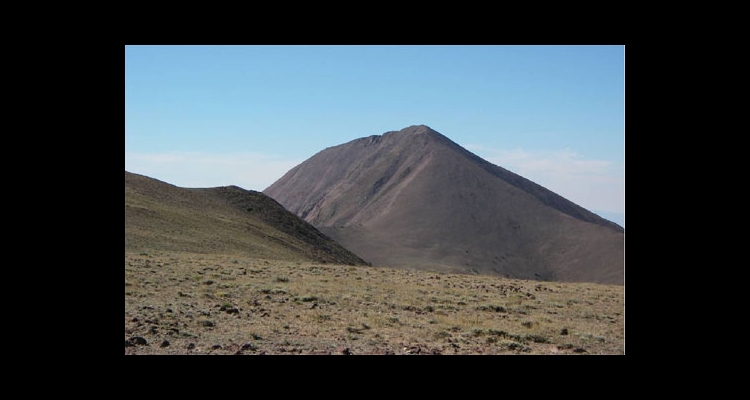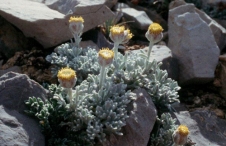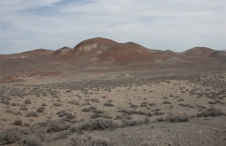Great Basin Alpine Vegetation
Alpine tundra is broadly defined as the zone of low-growing herbaceous or shrubby plants found above the tree line (the uppermost elevation where trees occur). This definition is inadequate for the Great Basin, where subalpine forest is not always present to form a tree line. A more apt definition of alpine tundra in Nevada is the zone above the upper limit of sagebrush-dominated shrublands. Although many of Nevada's mountains rise above the upper limit of trees, most of these are covered in mountain brush or a sparse cover of low sagebrush. True alpine communities in Nevada are rare and limited to the highest mountain ranges such as the Wassuk, White, Humboldt, Toiyabe, Toquima, East Humboldt, Ruby, Grant, Schell Creek, and Snake.
The lower elevation limit of alpine tundra in Nevada ranges from approximately 10,000 to 11,500 feet. Alpine plant communities have the greatest variation of any vegetation type in the Great Basin, reflecting the evolution of new species from valley plants adapting to the higher elevation or from the geographical isolation of mountaintop populations that have survived a considerable change in climate. As a result, this zone contains many unique species. For example, the primrose Primula cusickiana var. nevadensis is found only on limestone ridges of the Snake and Grant ranges. This endemism arises from the limited areas of alpine plant communities on the tops of mountains and from the inability of plants to disperse among mountaintops during current climatic conditions.
A relatively small number of bird and mammal species dwell in alpine tundra, although certain species can be considered alpine specialists. Pikas, relatives of rabbits, reside in the rocky habitats, gather hay for winter, and respond to intruders with their distinctive "eeeeep!" bleat. Marmots and pocket gophers are other characteristic mammals in alpine environments. Few bird species occur in the alpine, but the American pipit is a notable alpine specialist distinguished by its "pip pipit" call when flushed. Humans, too, have made less use of the alpine than of other vegetation types. The alpine environment is beautiful for recreation but challenging for making a living. In the alpine zone surrounding Arc Dome at the crest of the Toiyabe Range, there is rock-wall evidence of Native American blinds for hunting bighorn sheep.
With the exception of the high and wet Ruby Mountains, which seem more similar to Rocky Mountain environments than to other Great Basin mountain ranges, Nevada alpine zones are often quite narrow because the mountains are not very high. This implies that Nevada's alpine vegetation and the unique habitat that it represents are highly susceptible to the impacts of climate change. Should warming trends continue, there is very little mountain elevation above the alpine zone to which these plant and animal species can retreat.
Article Locations
Related Articles
Further Reading
None at this time.



